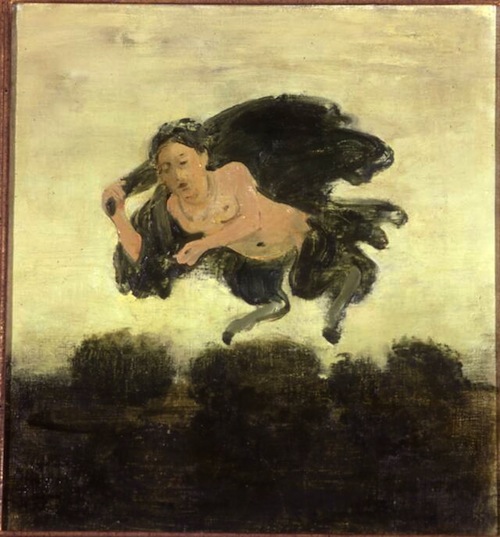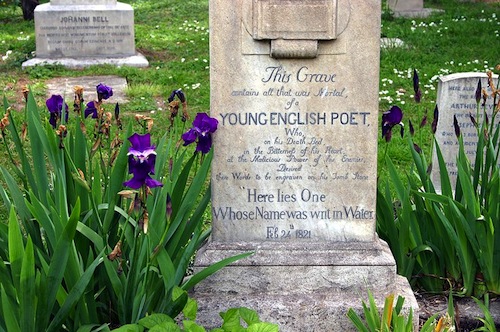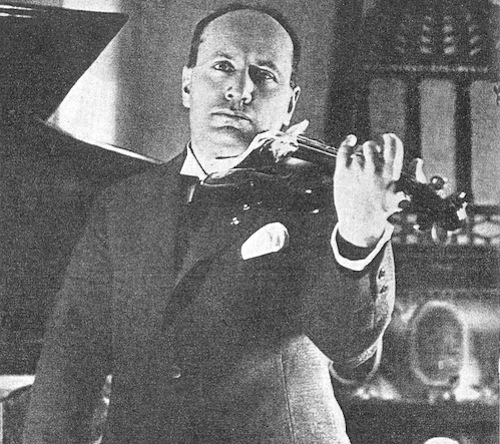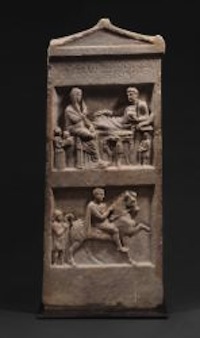
Christopher Ricks’s Keats and Embarrassment and Robert Gittings’s John Keats: The Living Year are like good slide lectures on the poet and his works. Both writers quote meaningfully from Keats himself, but Ricks is all over the place in discovery of his topic, a wonder in his manic dot-connects. Beside Keats we get Erving Goffman, Henry James, John Milton, Lionel Trilling, Jean-Paul Sartre (chunks), Charles Dickens, Denise Levertov and Merrill Moore (whole poems), Baudelaire, Mozart and more. Rick’s pattern recognition verges on ESP. Yet on his own he is capable of saying the necessary thing:
Can we praise and value works of imagination as we should praise and value behavior? I think that we can, should and do. It is not just that writing is itself a form of behavior; nor that the generosity which I find in Keats’s poems is to me so striking like that which animates his letters–and letters, though they entail imagination are airily free from the contingencies of the actual: letter are directly behavior in the most ordinary sense.
Then again, too, for more brilliant Keats readings, we should have a downloadable big-screen portfolio of the colorful, often hilariously illustrated Deep Keats Scrolls that Tom Clark created 1987-2007 on 48” x 36” sheets of architectural drawing paper for lectures given at his home. The original Scrolls are in Special Collections, University of Delaware Library, Newark, Del., but Tom has recently posted some on his Beyond the Pale site.
The point being, Keats is history but “this living hand” continues—not just the poems but the letters as well–to make poetry happen, his own and others. Furthermore, a thoughtful book on Keats and Women is still to be done. Jane Campion’s brave movie Bright Star barely scratched the itch. As Ricks’s title indicates, he is thematically bound to deal with matters like, as one chapter heading says, “Darwin, Blushing and Love” and “sensuousness,” generally. Perhaps I’ve missed something in the bibliographies (one thing Ricks does without) but surely there’s much more to be said of how Keats communicates to his sister-in-law Georgiana his feelings about Jane “Charmian” Cox and by extension, Georgiana herself:
As a Man in the world I love the rich talk of a Charmian; as an eternal Being I love the thought of you. I should like her to ruin me, and I should like you to save me.

The question of poetry’s cultural relevance always seems misplaced. If it has to do with numbers, how many through the turnstiles, how many copies sold, that’s the publisher’s and administrators’ lookout. Plenty of bad poetry gets by in the classroom by dint of being teachable and in the marketplace by being in one way or another comforting for those who look for sad comfort and/or mutual resentment rather than unexpected pleasures. I can name a number of first-rate poets whose works are un-teachable by the methods they use in schools. Kenneth Koch was a great teacher because he took classroom time to savor the surface qualities of the poem under discussion, and from there to communicate how the whole of the work made him feel, with analogies to other art (painting, especially) and everyday life. (His Making Your Own Days is the best book to give a friend who’s at a loss about reading poetry.) Adventurous poetry that isn't taken up by corporate and university presses seeps slowly, years away, into its proper cultural prominence; much good that does its creators in the meantime. Keats died convinced that his own name “was writ in Water.” It’s difficult to remember that poets choose to write as they do. Several years ago, in the 1980s, Ron Padgett said, “Now we’ll see who has the stamina.” I thought of this when Brent Cunningham told me that he and other poets friends of his were having a lot of worrisome discussions as to “whether it’s worth it, what are we doing, whether it goes anywhere.” “Stamina, eh?” said Brent. “That’s interesting.” Then more recently Ron said he had been reading a lot of books by young poets––“but can you tell me, what is ‘Late Capitalism’?” “Late Capitalism” is that condition under which poets who have ingested a load of bad vocabulary in MFA programs spend the next ten years painfully exorcising what they were taught there.

A touch of memento mori changes everything, and timor mortis, if not too overwhelming, can sane you right up. For something to read in normal circumstances? Today it’s Michael Wolfe’s wondrous set of translations of ancient Greek epitaphs, Cut These Words into My Stone (The Johns Hopkins University Press, 2013). A book Keats would deeply appreciate. A book to keep handy by bed or bath. The Greek (Epi-/taphos, written on a tomb) is included, the translations speak plainly with appropriate sharpness and amplification. Richard P. Martin’s scholarly foreword says:
If anything unites the thousands of Greek epitaphs, it is the essential Greek trait of loving words. Not only are the inscribed words presented to the individualized dead, like the final libation at a tomb, a fixed form of the living breath to be breathed again when a passer-by recites. There is an unquestioned…. faith in personal post mortem existence, so the dead speak back from their tombs (or, at cenotaphs, from afar).
Among the best are many by Callimachus (300-240 BCE):
The tomb you are passing holds Callimachus
He wrote good poems
And timed his jokes at parties so
That everybody laughed.
And this final anonymous inscription from late antiquity:
Those cut off from sweet daylight I mourn no longer.
I weep for those living in constant fear of death.

Born in New York in 1939, Bill Berkson was a poet, critic, teacher and sometime curator, who became …
Read Full Biography

